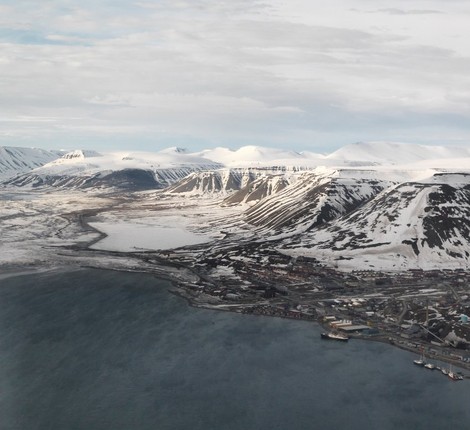Your podcast discovery platform
Curious minds select the most fascinating podcasts from around the world. Discover hand-piqd audio recommendations on your favorite topics.

piqer for: Climate and Environment Global finds Globalization and politics
I'm a freelance journalist, currently based in Madrid. I used to be a News Producer at CNBC in London before, but I thought a little bit more sun might do me good. Now I write for several news organizations, covering a range of topics, from Spanish politics and human rights for Deutsche Welle to climate change for La Marea.
Cracking The Arctic Amplification Mystery: Is The Answer In The Clouds?
Climate change is happening much faster in the Arctic than anywhere else, and the feeback loops generated by the disappearing polar cap have unexpected consequences. Most of them are worrying.
Recently, some of these consequences showed up in the flooding of Norway's Doomsday vault in the Svalbard archipelago. Such a symbollic catastrophe reminds us that our understanding of climate change, and, therefore, our capacity to prevent it, is in tatters.
This story (unrelated to the vault) starts, precisely, in Spitzbergen, the largest and only inhabited island of Svalbard. The town of Longyearbyen is the northernmost settlement with more than 1,000 inhabitants. A population witnessing climate change from the front row: melting fjords, shifting wildlife, strange weather patterns and even avalanches.
In Longyearbyen, an international group of scientists is trying to unearth the mystery of why the Arctic is warming up so fast, a process nobody understands yet. The concept is called Arctic Amplification, and to unravel it we need to get to know every little part of the system, from the color of the ice to the composition of the clouds. This team is studying the latter.
Clouds, like ice, reflect part of the sunlight back to space, reducing global warming. But they also retain part of the infrared radiation, increasing it. Studying their composition in regions like the Arctic could help us understand what we're up against:
"The team is hoping to learn how thick and permeable the clouds are in addition to how many ice crystals, water droplets and other particles they contain. They suspect that the microstructure of clouds is decisive for its contribution to global warming."
Cracking open this mystery may be the key to avoiding the worst parts of climate change. In a time when media outlets have limited funding, choosing to spread the word on science is always great. And doing it in an adult, positive and engaging way is much better.
Plus, their research methods are AWESOME.
